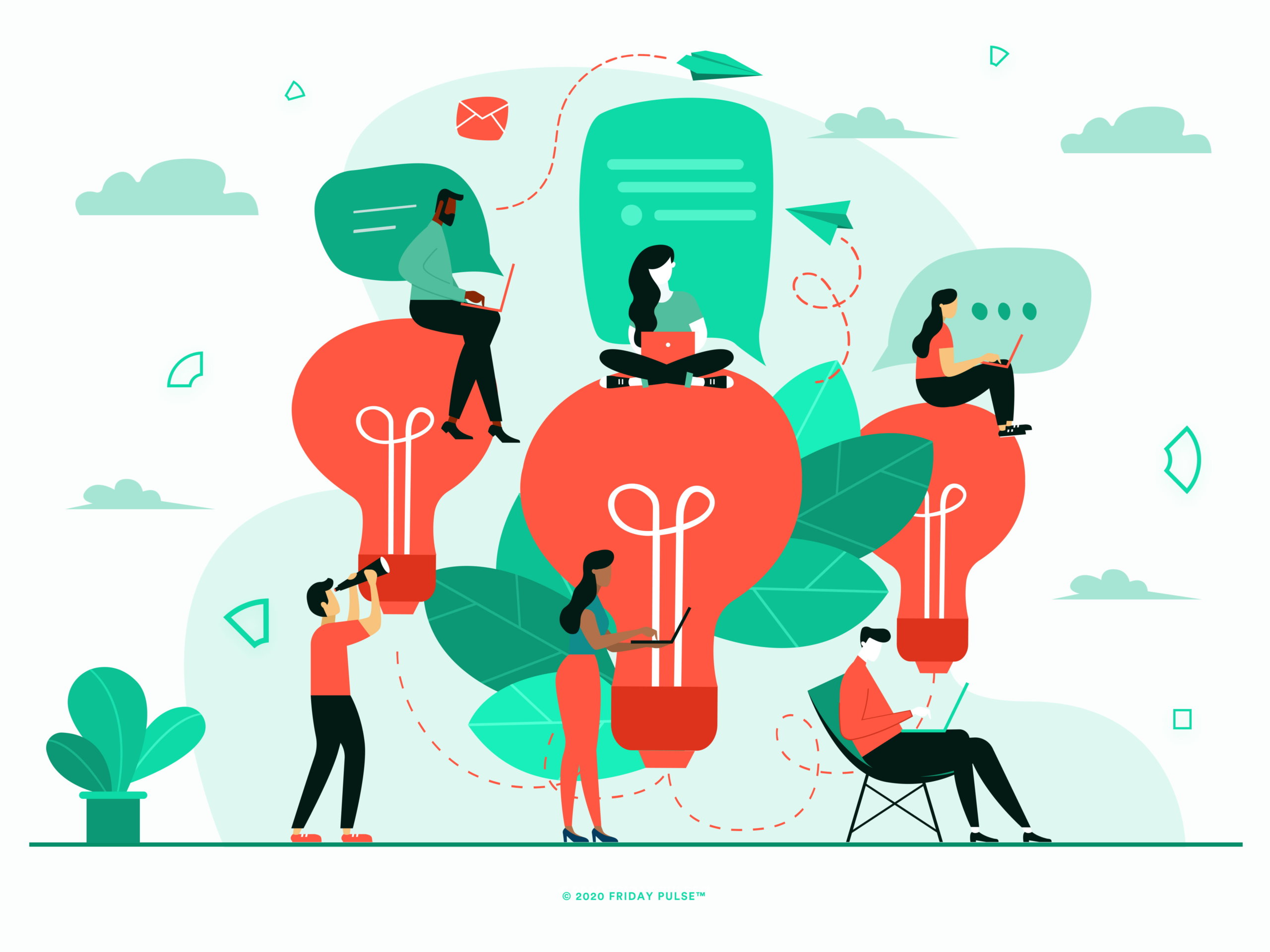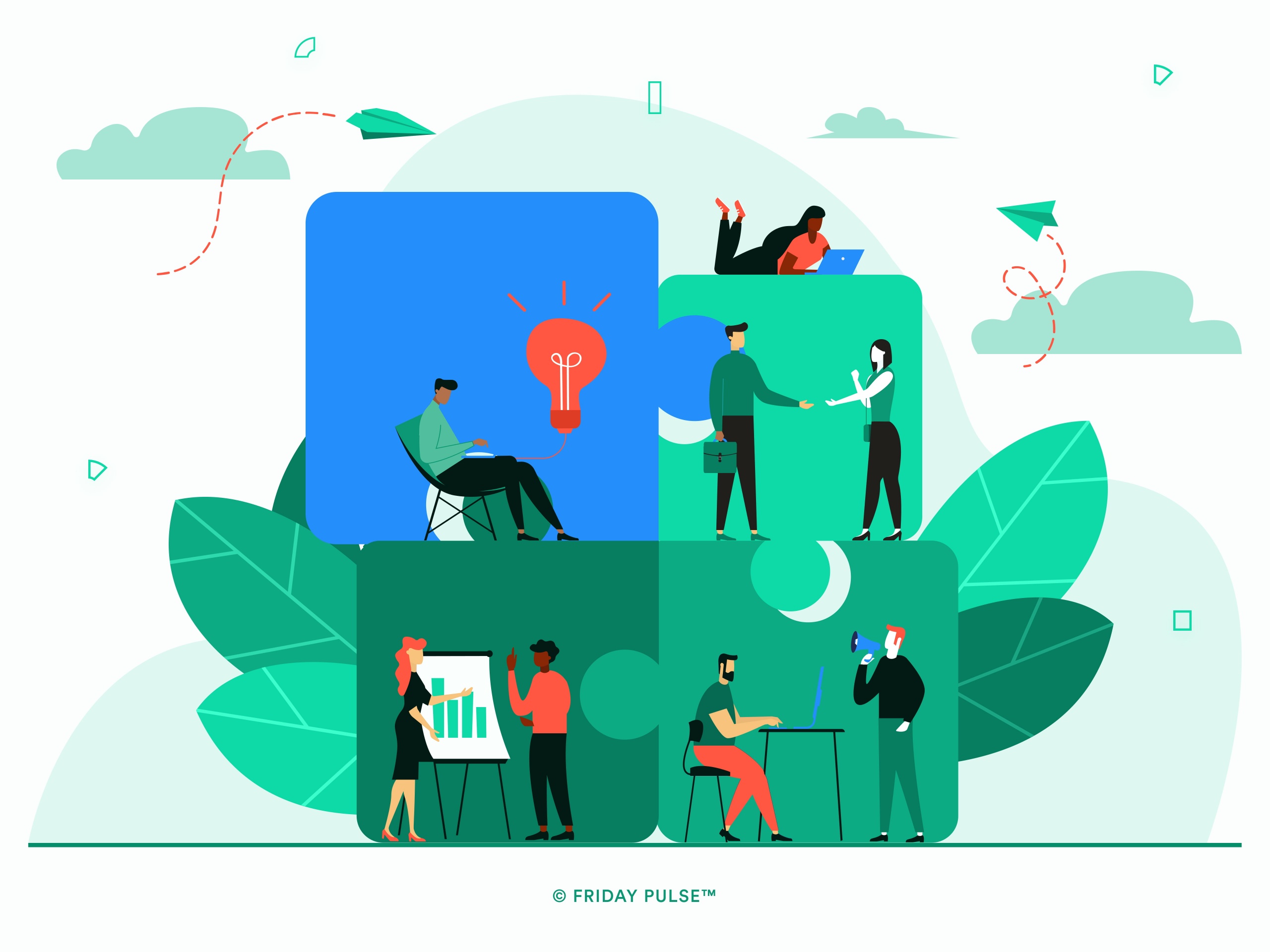“Innovate or die.”
This phrase has long been the battle cry of the business world. And it’s
true — if you don’t keep up with what’s going on in the marketplace,
you’ll fall behind. Yet, while we’re not here to advise you on what to
innovate or how to do it, there is one thing we can say: if you
innovate the way you take care of your people, innovation and creativity
will follow.
The current COVID-19 period is one of uncertainty. A recent survey by
McKinsey found that 90% of executives believe that the
pandemic will change how they do business across the next five years,
while 85% of executives are concerned that it will have a lasting
impact on customers’ needs and wants. The market is changing, and fewer
than 30% of executives feel prepared to address the changes.
Surviving will require innovation and creativity
Most businesses are in survival mode and are searching for creative,
flexible and innovative solutions to survive (and thrive).
Though some companies have experienced a spike in productivity from
working from home, this spike is likely to be unsustainable.
Without innovative ways of taking care of your people, you risk their
wellbeing and their ability to be creative.
Companies need to adapt to new customer needs and identify quickly how
the landscape is changing. Whether this is in new products, new services
or new business processes, the creativity of your people build these
innovative solutions.
It’s important to note that creativity does not refer just to artistic
endeavors or departments like marketing. What we are referring to here
is business creativity. As defined by Teresa
Amabile, business creativity is the way people approach
problems and how they use expertise, motivation, and creative thinking
skills. Creativity is not just the activity of creative industries — it
is an activity of positive, engaged workers across all sectors.
In a business context, it is the precursor to all innovation.
The link between positivity and creativity
Creativity is an energy born of positive emotions. In our research,
we’ve been able to confirm employees who are happy and positive about
their work are more likely to be creative, both now and across the next
three months. People in positive moods are better at lateral thinking,
processing complex information and tend to have a wider attention span —
all attributes we need to be creative.
Positive employee experiences lead to creativity.
In one study, students were shown short films that either put
them in a positive mood or were neutral. They were then required to
solve a challenge: they were given a candle, a box of pins, and matches,
and asked to fix a candle to a corkboard in a way that would not drip
wax. The results? 75% of the students who had watched the film that put
them in a positive mood solved the task — only 13% of students in the
control group did.
Generating creativity with the right level of challenge
One of the questions we ask in our quarterly culture profiles at Friday
Pulse is, “How often do you get the chance to be creative in your
job?” This question relates to one of our core Five Ways to Happiness
at Work drivers – Challenge.
Challenge is about moving on from the status quo, to learn something
new and to explore whether it is better. This is an iterative learning
process best fueled by a combination of creative energy and a capacity
to take on board feedback. Challenge leads to a positive feedback loop
— people feel more competent, able to achieve and more creative.
Challenge also encourages people to stretch themselves – to extend
their abilities. A good leader ensures that the level of stretch does
not overwhelm their team. They make sure they stretch enough to stave
off boredom. The sweet spot is in the middle, where people feel engaged,
useful and happy. In other words, leaders make sure the right
assignments match the right employee.
How do you support and challenge your teams to be more creative?
Innovating on how you take care of your people is the first step in
getting sustainable creativity. A happy work environment (even in the
current work from home conditions) is one that fosters creativity and
innovation. In their need to gain a competitive advantage or innovate,
many businesses forget that their people don’t just do the work; they
reimagine the work.
In that light, it’s a leader’s responsibility to make sure that people
enjoy their work. It requires a facilitative style of leadership and
understanding what makes your people happy. Here’s how you can help your
organization become more innovative and creative:
Create a space of psychological safety
In today’s environment, a space of psychological safety is
critical. We’ve talked about how people need to know that they are
safe, that their jobs are safe, and that everything
will work out. They need a space where they feel safe enough to discuss
how they’re really thinking and feeling about work.
In a psychologically safe place, your people are more likely to share
their opinions. Remember, true creativity comes from difference.
Diversity in opinion leads to flexibility in thinking and, ultimately,
the ideas you need. Creativity requires a degree of failure — all
solutions are not always tenable, and your team needs to have that space
(and safety) to take risks.
*Give people resources
*Amabile states that the two significant resources that affect
creativity are time and money. In some circumstances, time pressure can
cause increased creativity, but extremely tight deadlines cause distrust
and burnout. Creativity takes time — it needs space to experiment with
new concepts. As a leader, not planning enough time for the creative
process to take shape is asking for failed ideas.
With work from home being the “new normal”, it’s essential to make sure
that team calls are done efficiently. Keep meetings to less than five
people. You won’t get creative answers with 20 people on a Zoom call.
*Innovate the way you look after your people
*Helping your people be happy is an act of personal care. It’s about
team bonding — virtual coffee and hangouts — and creating space to share
how difficult things are right now. It’s about tracking happiness and
challenging each other when it drops to new levels of positivity.
If you’re reading this article, you’re invested in improving workplace
culture. You recognize that, in the current pandemic, workplace culture
is a priority. Friday Pulse is designed for forward-thinking companies
that understand the importance of their people’s wellbeing.
We don’t focus on engagement scores and outdated metrics. Instead, by
tracking happiness scores, you get a real-time update on how your teams
are coping while highlighting who needs more support. As we collect this
data, we can show you if your initiatives and solutions are working.
To find out more about how Friday Pulse can support your
organization through the continuing pandemic please contact our Head of
Helping People, Clive Steer
at clive@fridaypulse.com



